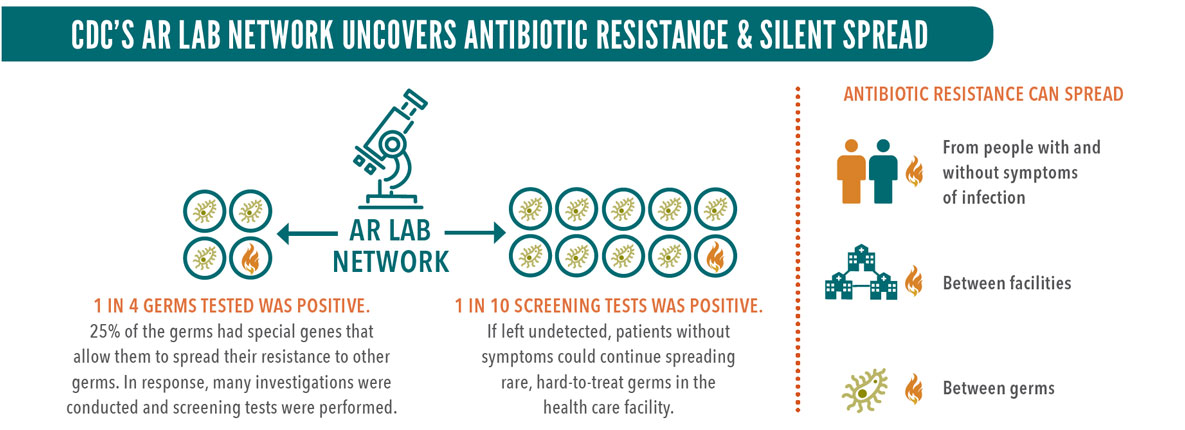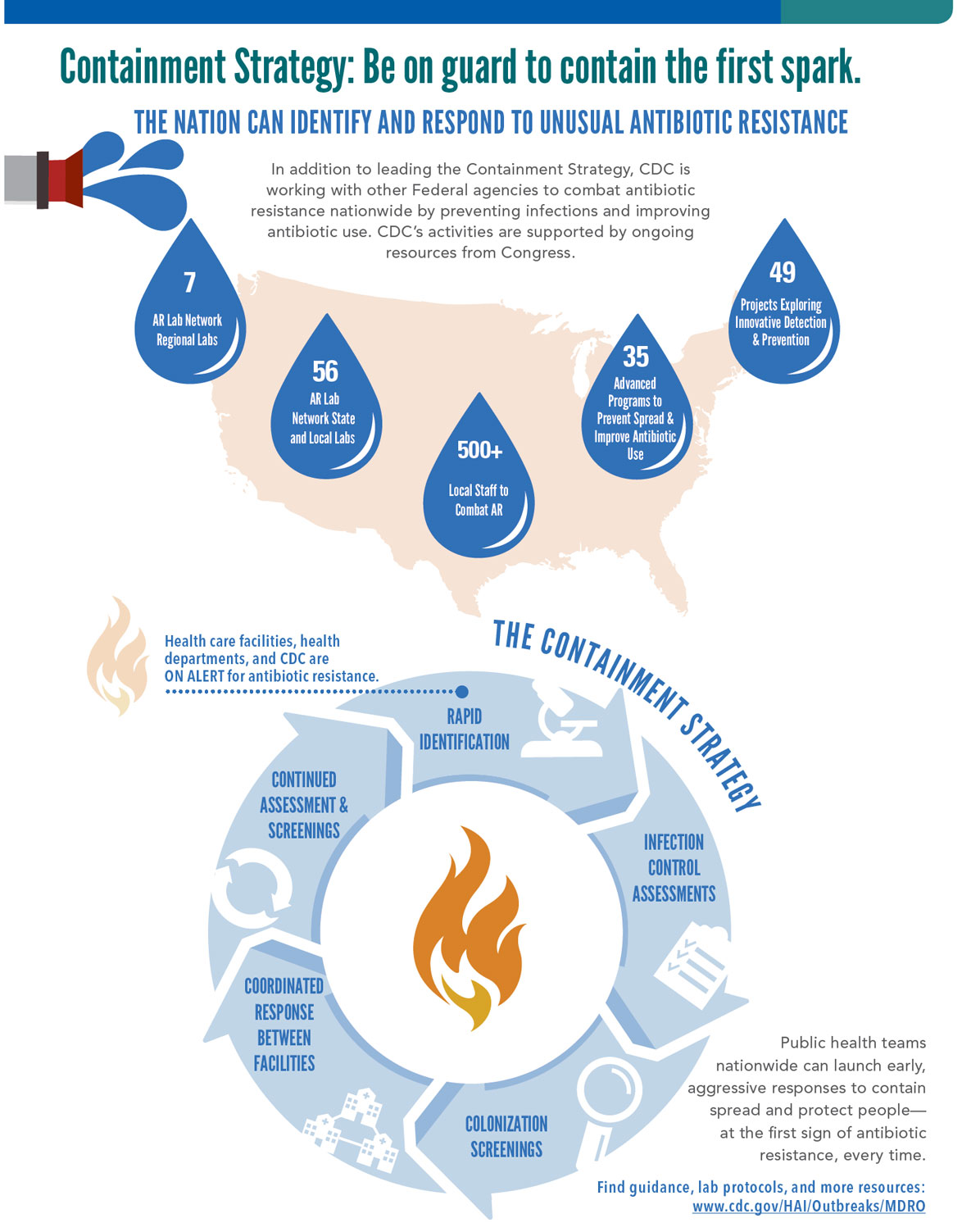Vital Signs: Containing Unusual Resistance
Early, aggressive action can prevent spread

- Once antibiotic resistance spreads, it is harder to control—like a wildfire.
- Finding and responding to unusual resistance early, before it becomes common, can help stop its spread and protect people.
- New or rare types of antibiotic resistance can be easier to contain when found rapidly—like a spark or campfire.
UNUSUAL ANTIBIOTIC-RESISTANT GERMS ARE:
- Resistant to all or most antibiotics tested, making them hard to treat, and
- Uncommon in a geographic area or the US, or
- Have special genes that allow them to spread their resistance to other germs
Examples of unusual resistance: Vancomycin-resistant Staphylococcus aureus (VRSA), Candida auris, and certain types of “nightmare bacteria” such as carbapenem-resistant Enterobacteriaceae (CRE).

CDC’S AR LAB NETWORK UNCOVERS ANTIBIOTIC RESISTANCE & SILENT SPREAD
AR LAB NETWORK
1 in 4 bacteria tested was positive:
25% of the germs had special genes that allow them to spread their resistance to other germs. In response, many investigations were conducted and screening tests were performed.
1 in 10 screening tests was positive:
If left undetected, patients without symptoms could continue spreading rare, hard-to-treat germs in the health care facility.
ANTIBIOTIC RESISTANCE CAN SPREAD
- From people with and without symptoms of infection
- Between facilities
- Between germs
SOURCE: CDC Vital Signs, April 2018.

Containment Strategy: Be on guard to contain the first spark.
THE NATION CAN IDENTIFY AND RESPOND TO UNUSUAL ANTIBIOTIC RESISTANCE
In addition to leading the Containment Strategy, CDC is working with other Federal agencies to combat antibiotic resistance nationwide by preventing infections and improving antibiotic use. CDC’s activities are supported by ongoing resources from Congress.
7
AR Lab Network Regional Labs
56
AR Lab Network State and Local Labs
500+
Local Staff to Combat AR
35
Advanced Programs to Prevent Spread & Improve Antibiotic Use
49
Projects Exploring Innovative Detection & Prevention
THE CONTAINMENT STRATEGY
The containment strategy is cyclical and includes:
- Rapid Identification: Health care facilities, health departments, and CDC are ON ALERT for unusual antibiotic resistance.
- Infection Control Assessments
- Colonization Screenings
- Coordinated Response Between Facilities
- Continued Assessment & Screenings
Public health teams nationwide can launch early, aggressive responses to contain spread and protect people—at the first sign of unusual antibiotic resistance, every time.
Find guidance, lab protocols, and more resources: www.cdc.gov/HAI/Outbreaks/MDRO
SOURCE: AR Investment Map: www.cdc.gov/ARinvestments.
